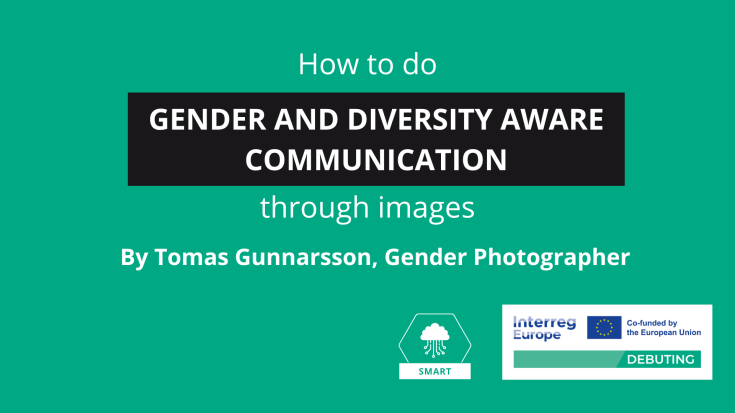Quick Guide to Inclusive and Gender Aware Communication

The past years inclusiveness in communication has been discussed more. But how to do inclusive communication in practice? Tomas Gunnarsson, also known as the Gender Photographer, gives simple guidance on how to improve the inclusiveness and gender awareness of communication.
Tomas’ lecture was part of the third Thematic Workshop organized by Karlstad University for DEBUTING project. In the lecture Gunnarsson gives examples from media, advertisements, and his own projects, illuminating how images and words can reinforce narrow gender roles and exclusionary norms – or challenge stereotypes and mirror everyone in society, not just those who fit the norm. You can watch a summary of the presentation here. Below you can find some of the tips Gunnarsson shares in the lecture to apply to your organization's communication.
Count heads
One easy way to get an idea of e.g. a photobank’s or brochure’s inclusivity is by counting heads: how are the different genders presented? How diverse are the people in other ways, for example are there people of different ages, ethnicities, disabilities, and body types? And if not, is there something to be done about it?
Include without making it obvious
When adding diversity in photos, it is important to “include without making it obvious”. But what does this mean exactly? Gunnarsson uses an example of a photo with a man in a wheelchair a University had under the headline “Study abroad with a disability”. However, the communication would have been much more inclusive if the photo would have been used anywhere else, for example under the headline “Choosing a University Program”, where the disabled man would have been just like any other student, rather than a representative of his group.
You can’t be what you can’t see
Inclusion in communication is not just about “doing what’s right”. Not seeing people like yourself in different positions limits the thinking of who can become what; creating more inclusive communication broadens the thinking and the possibilities for different people.
Gender stereotypes in photos
Tomas’ lecture takes us through some gender stereotypes in photos; how women are often portrayed as soft and playful and men strong and serious. These gender stereotypes are not only limiting women but men too – also in a harmful way.
|
Tomas Gunnarsson, also known as The Gender Photographer, is a Swedish journalist, photographer and gender expert. Since 2011 he has helped hundreds of companies, government institutions and municipalities in Sweden and all over the world to make their communication more gender-aware and inclusive. Among his clients are H&M, Google and The United Nations. |
